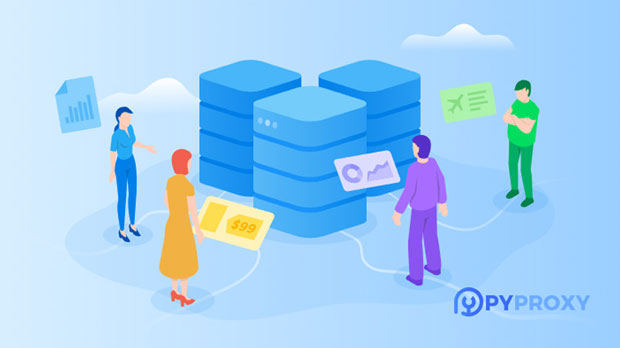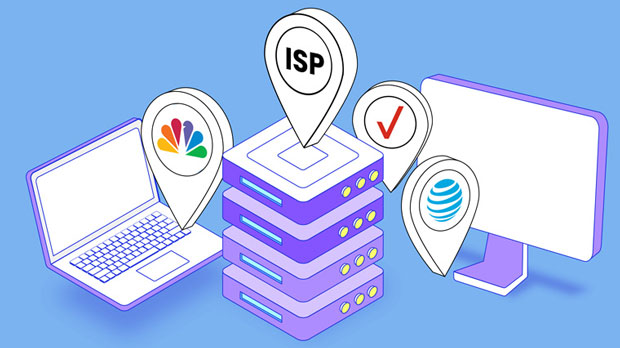PYProxy vs ProxyEmpire Rotating Residential Proxy, which supports more proxy protocols?
When it comes to rotating residential proxies, two major players in the market are PYPROXY and ProxyEmpire. Both services are designed to provide users with a reliable way to rotate IP addresses for anonymity, web scraping, or bypassing geo-restrictions. However, an important consideration for users is the proxy protocols each provider supports. In this article, we will analyze and compare the proxy protocols supported by PYProxy and ProxyEmpire, providing a detailed examination of the strengths and limitations of each, helping you make an informed decision based on your needs. Introduction: The Importance of Proxy ProtocolsProxy protocols play a critical role in how proxies operate. They determine how data is transferred between the client and the server, impacting factors such as speed, security, and compatibility with various applications. Residential proxies, in particular, are highly sought after due to their ability to mimic real user behavior, but choosing the right protocol is essential for maximizing efficiency and ensuring smooth operation.When evaluating providers like PYProxy and ProxyEmpire, understanding the range of proxy protocols they offer is key to finding a solution that aligns with your specific use cases, such as scraping, privacy protection, or handling large-scale data requests.Overview of PYProxy’s Supported Proxy ProtocolsPYProxy is known for offering a wide range of features designed for flexibility and high performance. The platform supports multiple proxy protocols, providing users with several options depending on their requirements. Below are the primary proxy protocols supported by PYProxy:1. HTTP(S) ProxyHTTP and HTTPS proxies are widely used for web scraping and browsing tasks. PYProxy's HTTP(S) proxies provide fast, reliable connections for accessing websites while masking the user's original IP. This protocol is particularly valuable for users needing to bypass geo-blocks or perform web scraping tasks that require high anonymity.2. socks5 proxySOCKS5 is a versatile proxy protocol supported by PYProxy. It offers enhanced security features and can handle a broader range of traffic, including P2P applications, gaming, and secure browsing. socks5 proxies are often preferred by users who need a flexible, high-performance solution that supports various types of online activities.3. Residential ProxiesPYProxy specializes in rotating residential proxies. These proxies use IP addresses from real residential networks, making them less detectable by websites and services that use advanced anti-bot measures. This is especially beneficial for tasks like ad verification, SEO monitoring, and social media automation.Overview of ProxyEmpire’s Supported Proxy ProtocolsProxyEmpire, a competitor in the rotating proxy space, also offers a selection of protocols designed to meet the needs of its diverse user base. The service supports several proxy protocols, ensuring that customers can select the best option for their unique requirements. Here's an overview of the primary protocols supported by ProxyEmpire:1. HTTP(S) ProxyLike PYProxy, ProxyEmpire provides HTTP(S) proxies for web browsing and scraping purposes. These proxies offer users the ability to access websites anonymously while hiding their real IP addresses. With fast speeds and reliable connections, ProxyEmpire’s HTTP(S) proxies are ideal for users looking to perform basic scraping or unblock geo-restricted content.2. SOCKS5 ProxyProxyEmpire also supports SOCKS5, a protocol known for its versatility and security. SOCKS5 proxies allow for more secure connections and are capable of handling various online activities, from P2P file sharing to high-bandwidth applications. ProxyEmpire’s SOCKS5 proxies are suitable for users who require both privacy and performance, especially when engaging in data-intensive tasks.3. Residential ProxiesProxyEmpire excels in providing rotating residential proxies, a key feature that sets it apart from other providers. By utilizing a network of real residential IP addresses, ProxyEmpire ensures that its proxies are effective in avoiding detection and bypassing advanced anti-bot mechanisms. Their rotating residential proxies are ideal for large-scale web scraping, sneaker bots, or other activities requiring high anonymity.Comparison: Which Provider Supports More Proxy Protocols?Both PYProxy and ProxyEmpire offer similar proxy protocols, including HTTP(S), SOCKS5, and residential proxies. However, there are some subtle differences that may influence your decision depending on your needs.1. Flexibility and Protocol RangeIn terms of supported protocols, both services are quite similar. They both offer the essential HTTP(S), SOCKS5, and residential proxies, which are the most commonly used in rotating proxy solutions. However, PYProxy may have an edge when it comes to providing specialized features such as IP rotation speed control and more granular management options for residential proxies.2. Performance and SpeedWhile both PYProxy and ProxyEmpire offer robust services, the performance of each can vary based on the specific proxy protocol used. SOCKS5, for example, tends to offer lower latency and more secure connections, making it a preferred option for performance-sensitive tasks like gaming or P2P file sharing. In this regard, ProxyEmpire’s SOCKS5 proxies are generally considered to have slightly better performance due to their optimized infrastructure.3. residential proxy Network and RotationWhen it comes to rotating residential proxies, both PYProxy and ProxyEmpire offer similar benefits. However, ProxyEmpire is known for having an extensive pool of residential IP addresses and more frequent IP rotations, which can be beneficial for tasks that require high volumes of requests or need to avoid detection. PYProxy, while competitive, may not offer as large of a pool of residential IPs, which could result in lower rotation frequency.4. Specialized Use CasesBoth services are well-suited for a variety of use cases, from web scraping to privacy protection. However, if your needs lean towards high-performance applications like gaming or streaming, PYProxy’s more flexible SOCKS5 proxy settings might offer a better experience. For large-scale data collection or scraping tasks requiring continuous proxy rotation, ProxyEmpire’s extensive network and frequent IP changes make it a more viable option.Conclusion: Which One to Choose?When deciding between PYProxy and ProxyEmpire, the choice largely depends on your specific requirements. If you need a service with highly flexible protocol management and a focus on security, PYProxy might be the better choice. Its ability to fine-tune IP rotation and protocol settings offers a tailored experience that could be useful for specialized tasks.On the other hand, if your priority is high volume, large-scale proxy rotation, and seamless access to a vast network of residential IPs, ProxyEmpire is likely to offer the better solution. The combination of speed, performance, and a large residential IP pool positions it as an excellent option for data-intensive tasks.Ultimately, both services support a similar set of proxy protocols, but the nuanced differences in performance, flexibility, and scalability make each provider a better fit for different use cases. Consider your specific needs, the scale of your operations, and the importance of performance when making your decision.
2025-02-25

























































